Up Next

The Red Bull versus Ferrari duel took another swing in Azerbaijan as the two contenders for the 2022 Formula 1 championship experienced opposite situations: first and second for Red Bull, and a sensational double retirement for Ferrari.
At 80 points Red Bull’s constructors’ lead has never been greater this year and Max Verstappen has gained 56 points on Charles Leclerc over the span of four races. Indeed, after Baku, Leclerc isn’t even second to Verstappen in the drivers’ championship anymore, having dropped behind Red Bull’s Sergio Perez.
In the last three grands prix, Ferrari seems to have entered a negative loop of results, despite the fact that F1-75 is very competitive. Unlike Baku, Barcelona and Monaco were two circuits where Ferrari should have had the edge over the Red Bull RB18 based on the two cars’ overall characteristics, and yet the team walked away with an increased deficit on both occasions.
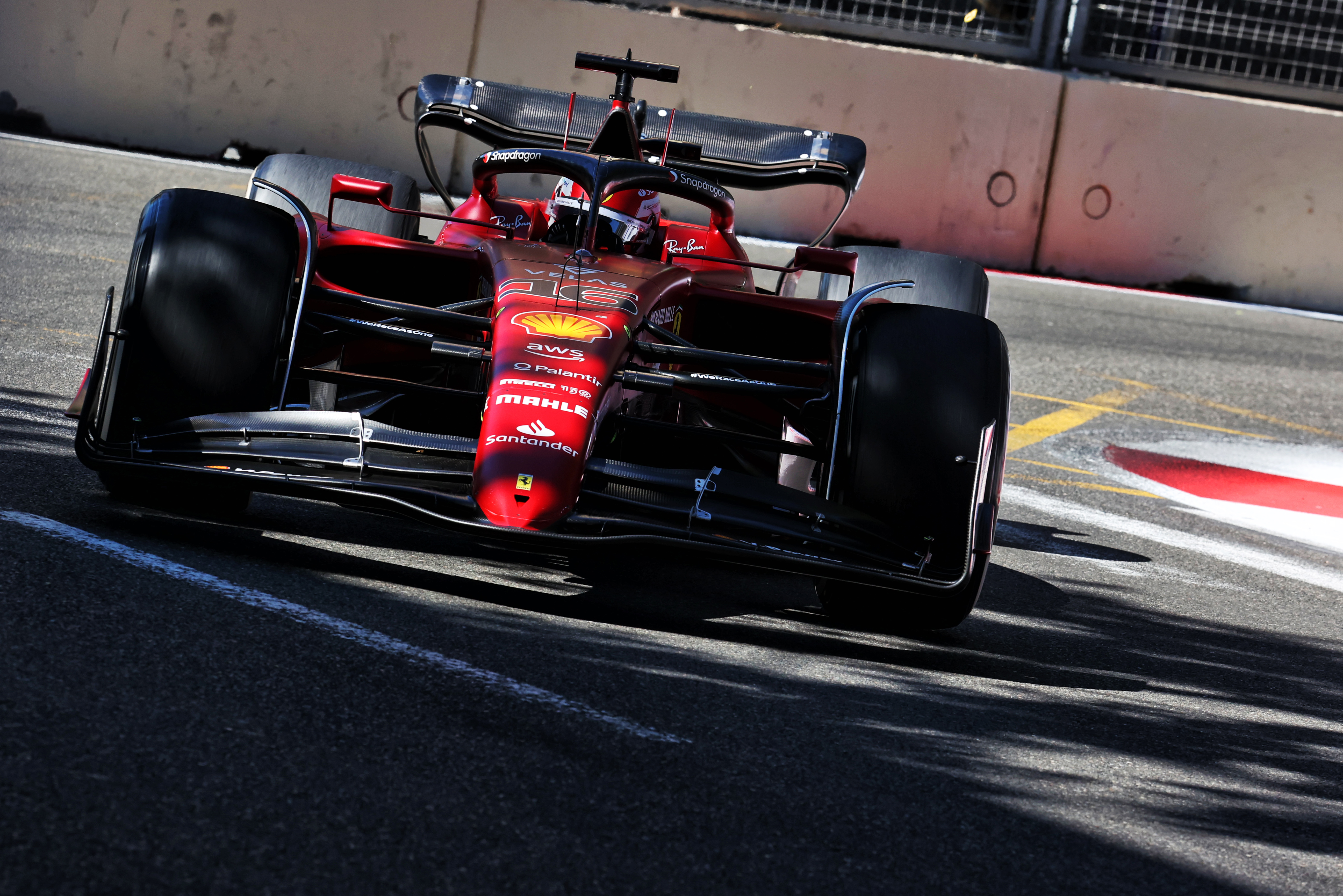
Leclerc was dominating both the Spanish and Monaco GPs, before losing likely wins due to a mechanical breakdown in the turbo and a wrong strategy.
Ferrari proved more competitive than Red Bull in those two grands prix, while in Azerbaijan the situation was more similar to what it had been in Miami, with a Red Bull slightly faster on the race pace.
The visible upgrades introduced in Spain on the F1-75 almost overshadowed the real innovations that were not visible and were under the floor. The updates brought to Barcelona have increased the performance of the F1-75 in terms of both top speed and porpoising.
In addition to the high downforce rear wing, used also in Monte Carlo, Ferrari for Barcelona revised many areas of the floor, both in the front and in the rear.
The outer fences have been widened and lengthened, taking on a shape more similar to that of the Red Bull, to collect more turbulent airflow from the front wheels, bringing it towards the outside of the floor.
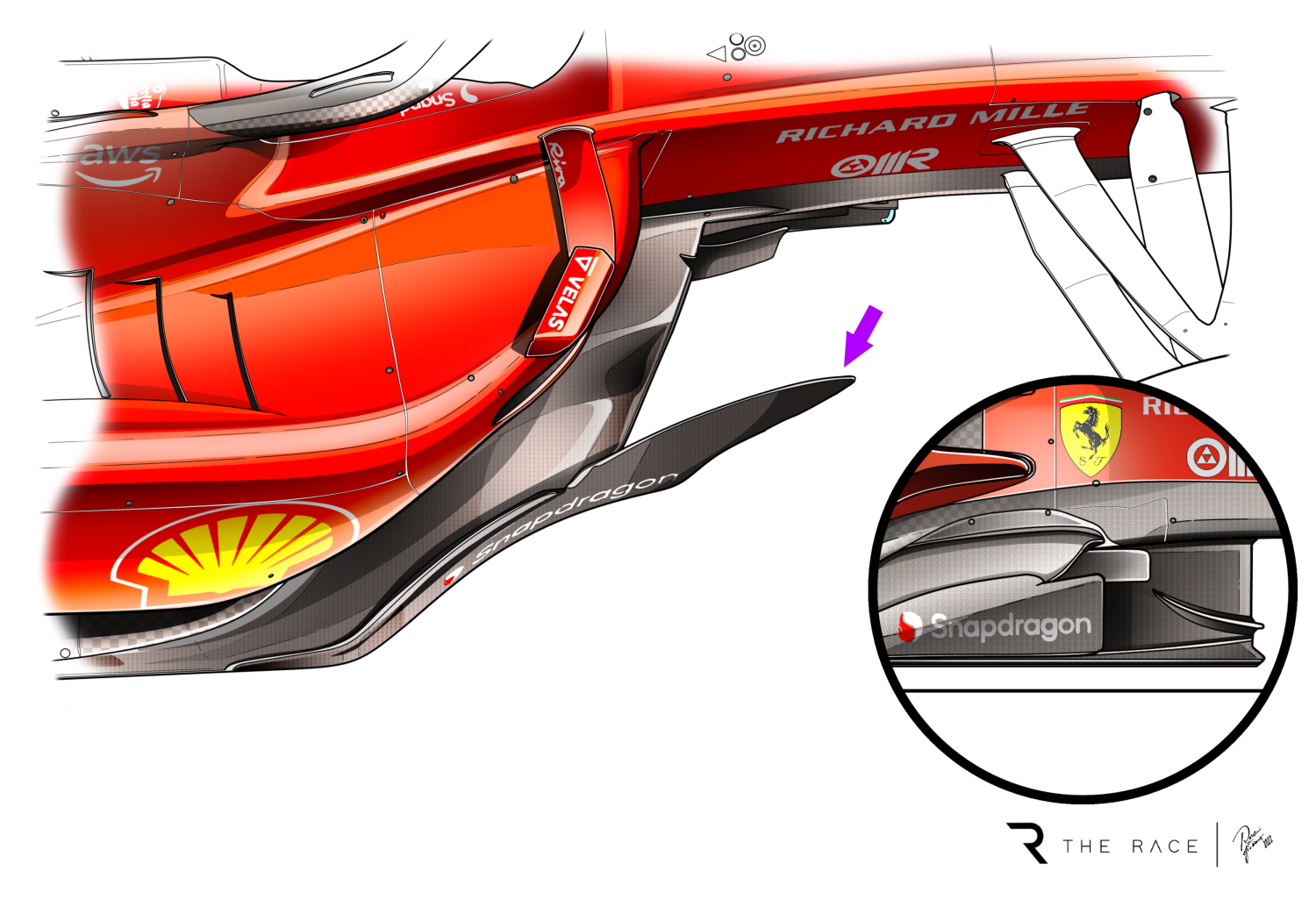
The real floor upgrade was only visible in Monaco when Carlos Sainz’s crashed car was lifted by the crane at Portier in qualifying, and we saw a novelty in the keel area, to let a portion of the airflow of the central part flow towards the final portion of the venturi tunnels.
The Maranello aerodynamicists have modified the final portion of the bottom and the central area of the diffuser – under the crash structure – in order to increase the flow rate in the tunnels with a sort of ramp. The flow trend is indicated by the blue arrows in the below diagram.
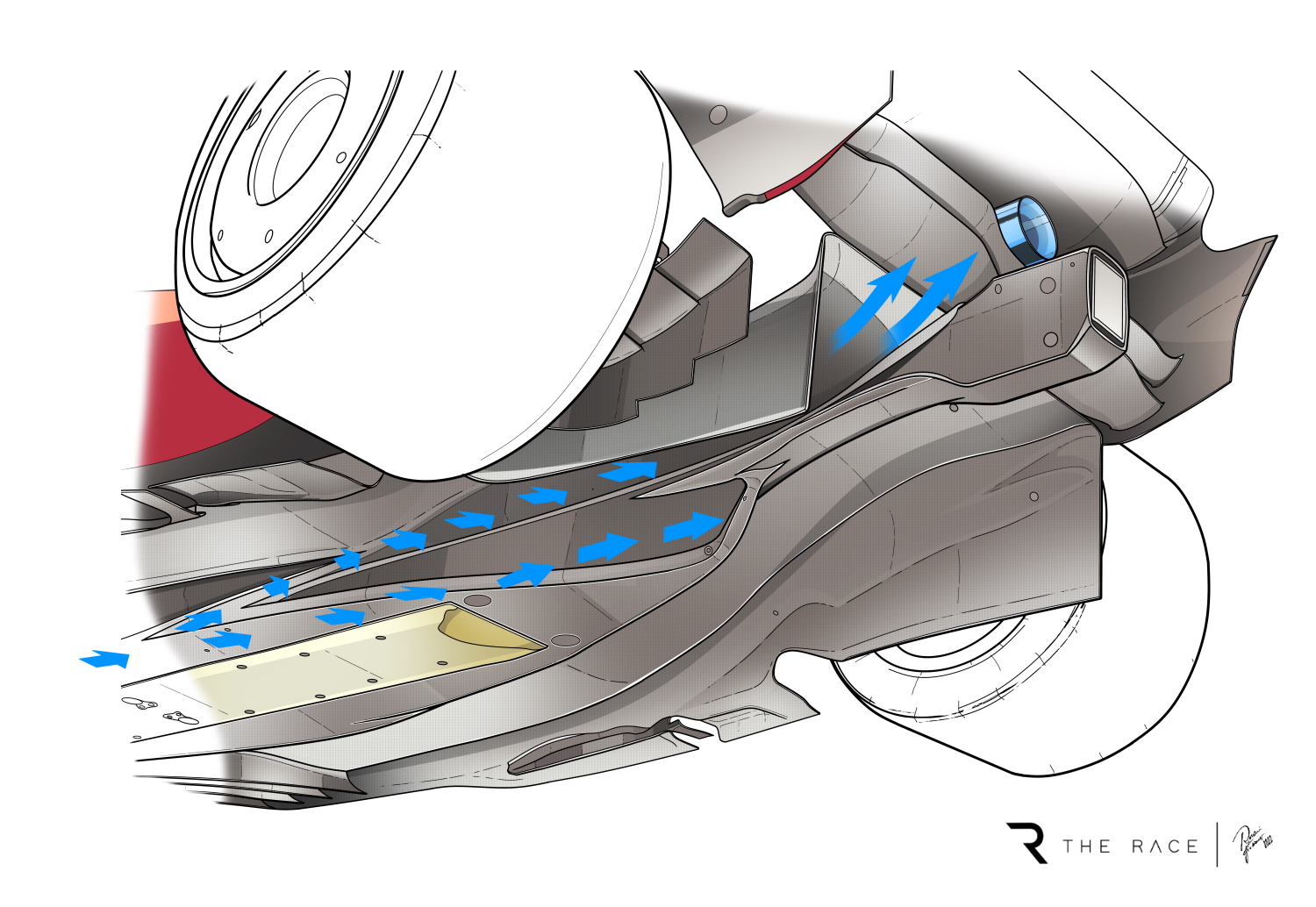
In terms of porpoising, Ferrari changed the shape of the hole on the floor in front of the rear wheels, also adding the skid block to prevent the bottom from touching the asphalt.
In Baku, Ferrari hoped to redeem itself for what happened in Spain and Monaco, but the result was even worse.
In terms of performance, the Azerbaijan GP was not bad for Ferrari.
There was some concern that the straightline speeds of the Red Bull RB18 would put Ferrari in serious trouble, but that was not the case.
In Baku the new Ferrari rear wing that was initially supposed to be present in Miami, and which was not then used to safeguard the tyres, made its debut. Ferrari had to pay for that choice in Miami, as we saw how the new wing was worth a few more km/h in Baku.
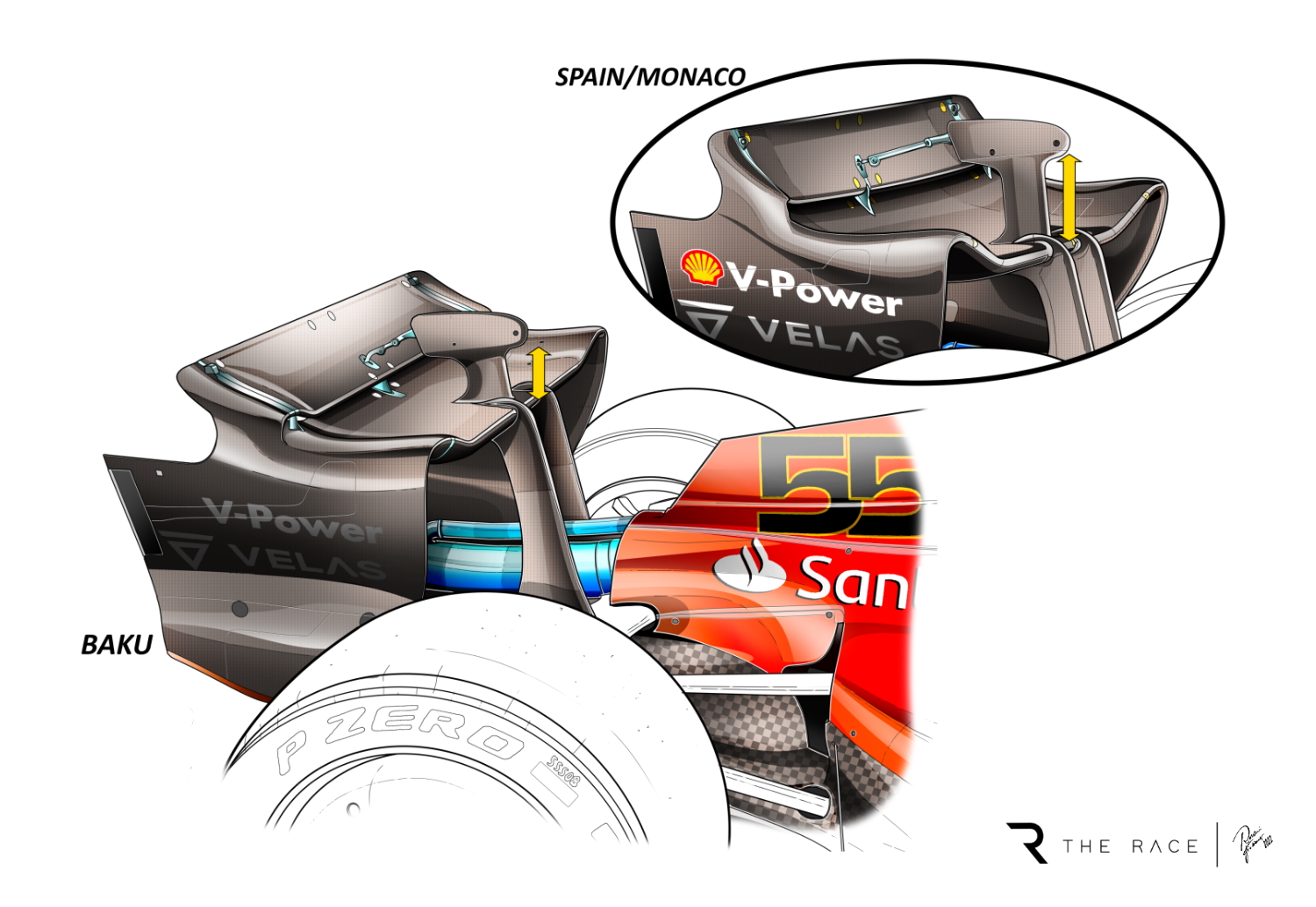
In the duel with Verstappen in the race, Leclerc’s Ferrari managed to defend itself despite the fact that Verstappen was in the wake and had the DRS open. Compared to FP1, where Ferrari used the Jeddah rear spoon wing, the F1-75’s improved straightline performance in the last sector was clear.
Ferrari also used the new mirror supports, longer and with a vortex generator in the area of attachment to the chassis. Ferrari had used a solution with an arch-shaped support, while in Baku the new supports have an ‘L’ shape very similar to the Red Bull design.
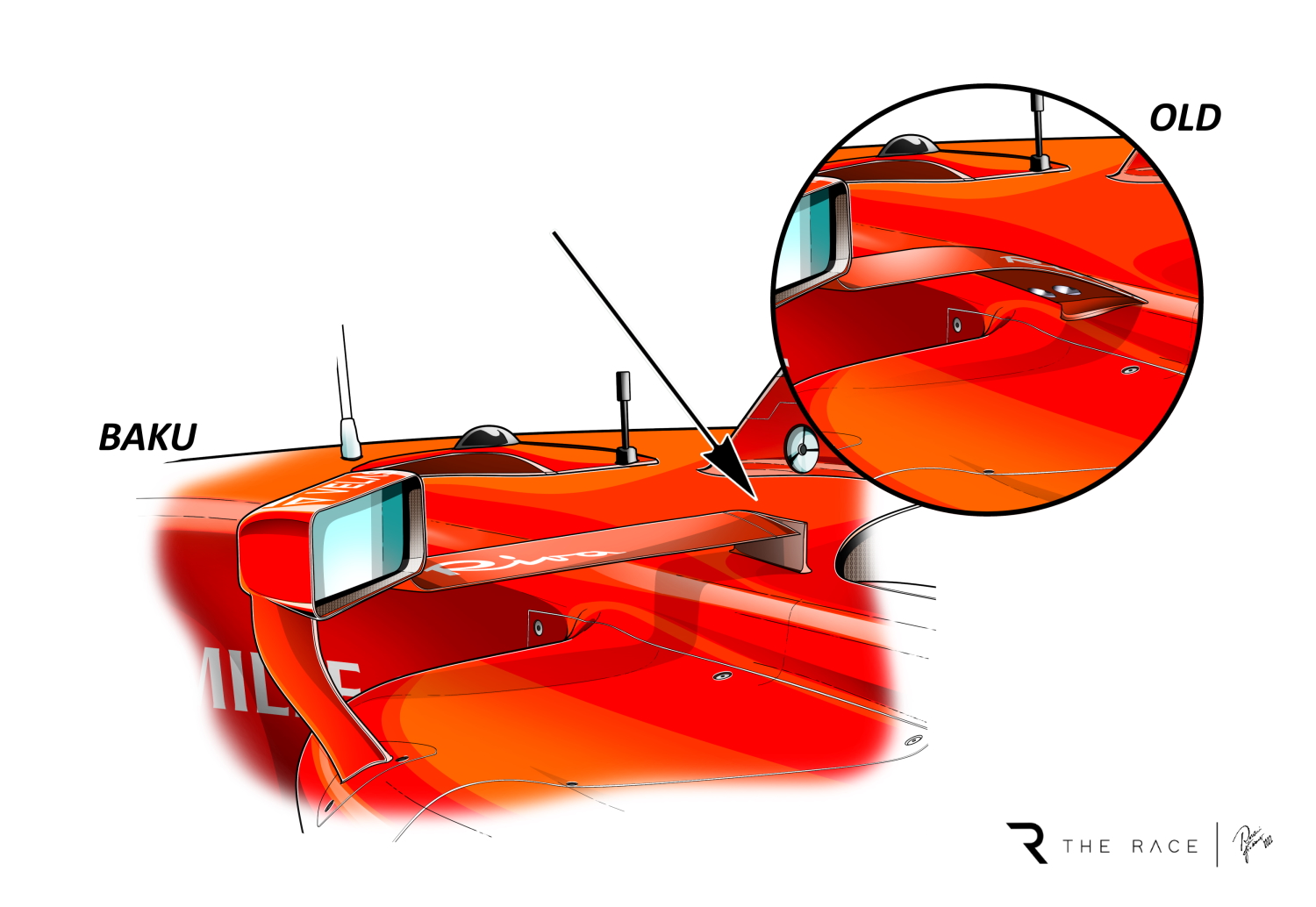
Ferrari also changed the device that drives the DRS with respect to the rear wing at the start of the season, and the DRS system was equipped with a different drive layout for the last three races. The hydraulic actuator located inside the central pylon has remained unchanged. The lifting hook has been revised, different on each rear wing configuration.
That’s not an insignificant detail given the DRS problems Red Bull has encountered.
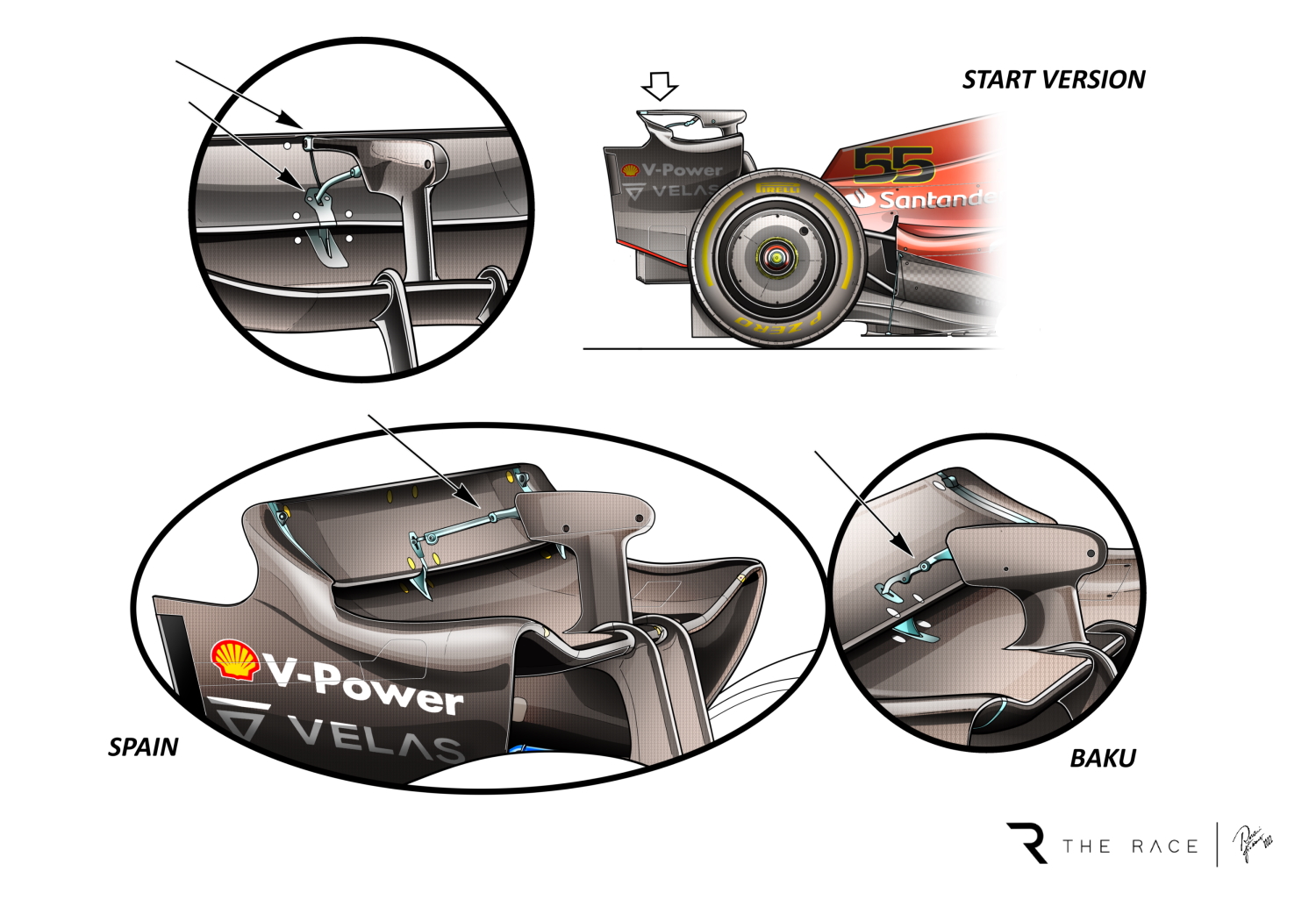
Though the aerodynamic innovations seem to go in the right direction, the reliability of the engine is less assured. The mechanical breakdowns of Spain and Azerbaijan have put a black mark against the 2022 power unit which seemed to be one of the strong points of this year’s red car.
The back-to-back nature of Azerbaijan and Canada leaves no time for the engineers from Maranello to immediately remedy the problem that occurred in Baku.
Sainz’s retirement was not due directly to the power unit, but Ferrari itself declared that a failure in the hydraulic pump triggered the whole engine into protection mode, and forced the Spaniard to park his car prematurely.
What is most worrying is that the failures of Leclerc at Barcelona, and the one with the blue smoke in Baku, seem to be of a different nature.
Ferrari sent the power unit for analysis to Maranello for a thorough ‘autopsy’, but in the meantime, it is certain that in Canada, Ferrari will use the third internal combustion engine of the year.
In order not to need the fourth turbo, it is likely that Ferrari will decide to use the early season turbo (number one) to be combined with ICE number three.
You can forgive Ferrari’s engine department for pushing the bounds of reliability. Let’s not forget that it had to be very aggressive with the 2022 engine to recover power against Mercedes and Honda before the engines were homologated until 2026.
On the reliability front, the FIA grants interventions and Ferrari must thoroughly analyse the problems to understand the actual cause.
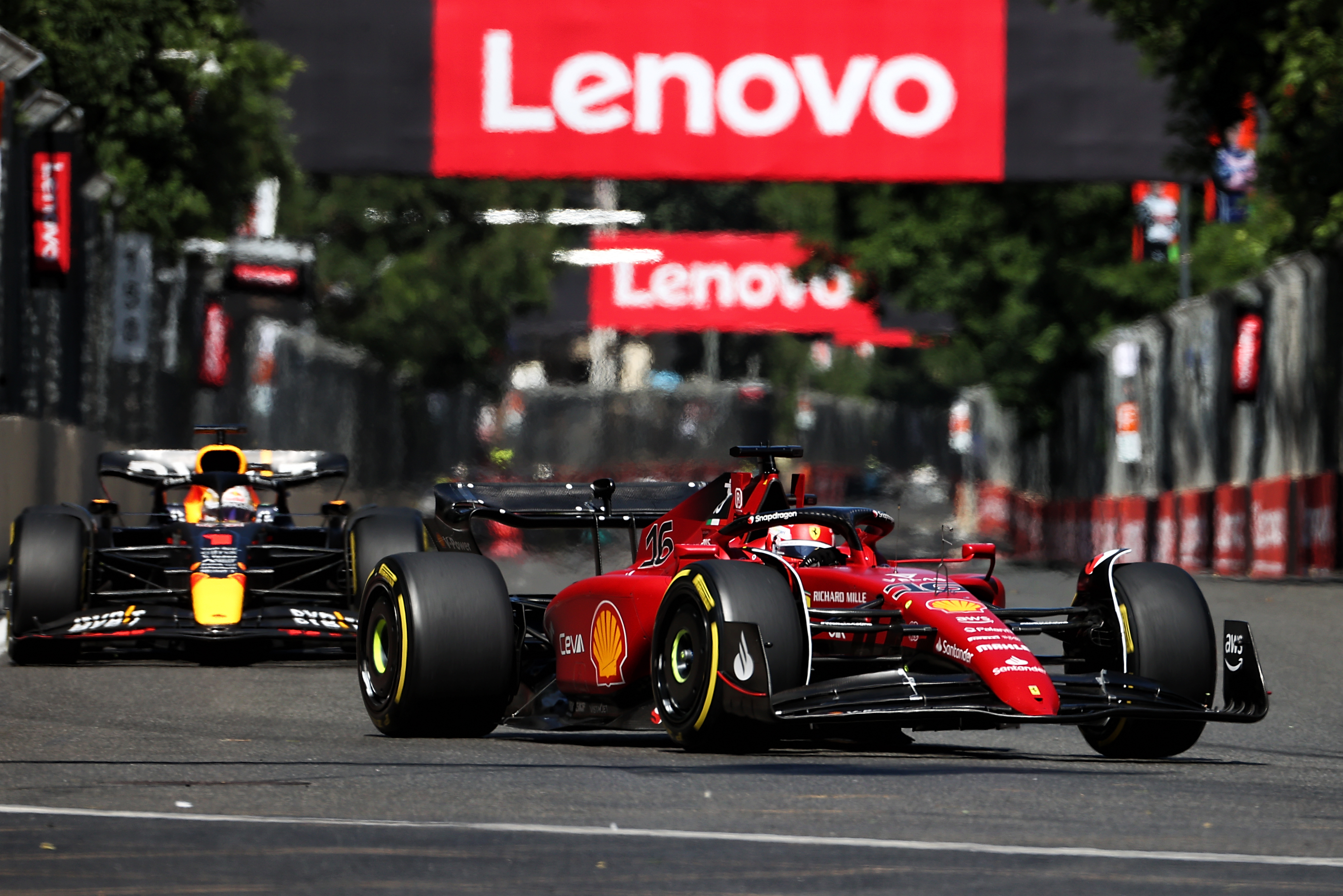
It will be almost impossible not to take penalties between now and the end of the championship for Leclerc, who in Canada will already be at the limit for internal combustion engines (three out of three).
Canada is a circuit where power counts so having a fresh engine will surely come in handy.
Aerodynamically, the Montreal circuit should marry better with the characteristics of the Red Bull RB18. Baku’s slow 90-degree corners enhanced the Ferrari’s traction qualities, while in Canada the corners are faster.
The Canadian GP will be a fundamental factor in defining Leclerc and Ferrari’s championship charge from here, and whether the team can actually turn the progress its designers have made recently into firm results.




